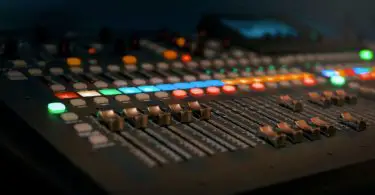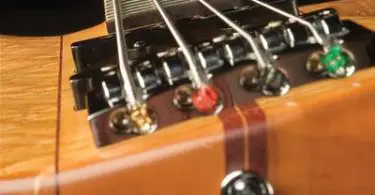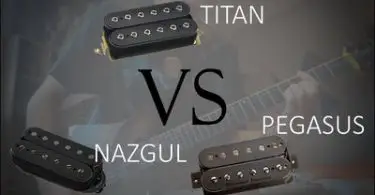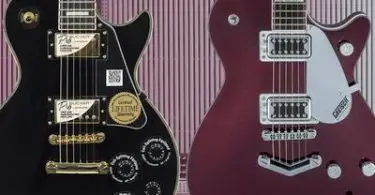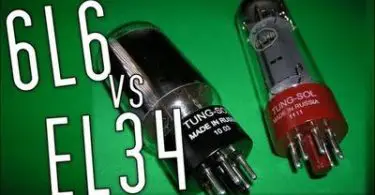Whether you are practicing or you have no other options, you will most likely spend lots of time playing guitar in your bedroom or your small home-based recording studio in the basement. I know what it feels like – you try to find a moment when no one is home, but then, there are also the grumpy neighbors who keep knocking on your door. I can feel your frustration. So, you need to overdrive a tube amp at low volume.
While you can smash the volume down a bit, you still want to gain as much as possible from this experience. You need a solid tone, as well as all the effects and feelings associated with playing in a concert hall. You do not want to limit this experience because you ruin it.
Quick Links
How to overdrive a tube amp at low volume
So, how do you make your guitar sound warmer at a low volume? How can you compress the sound? How do you get your ears to adjust without too much work?
A few things that you may already have at home can ease this experience and provide a rich sound without making your neighbors’ windows vibrate.
- Reactive load device
- Tube converter
- Master volume controls
- Output attenuators
- Voltage reduction controls
- Isolation cabinets
I have tried each of these options, and the results are flawless. I have noticed slight differences between one and another. I guess it depends on what kind of sound you want to achieve. Play around with them and figure it out yourself.

Best Sounding 6SN7 Tubes – FAQ & Buyer’s Guide!
Read More
On the other hand, there are a few other alternatives to try. They are not so common, and they may sound a bit stupid, but they work. The funny thing is that no one would think about them, yet they are right under your nose.
1. Large objects in front of the speaker cab
Get something large and throw it in there, as it will grab some of the volume. It has to be quite soft. For example, a pillow may work. You can also throw your jacket over it. Use whatever you have handy around.
2. Eliminate a speaker
I often use two speakers instead of using one large option. This way, the power is split in half. To reduce the volume, I grab one of the speakers and hide it inside a box, then cover it with clothes. I isolate it to eliminate its output. Problem solved!
3. Buy some cheap speakers
Get a bunch of speakers with a lower sensitivity or efficiency. Practically, you should check out the sound output. I will be honest with you – the result is not the best, but at least you drop the volume a little, so your family will not be so annoyed.
Now that you are done with the cheap solutions, here are a few ideas to make things work without really losing quality.
4. Reactive load device
Such a device connects between the amp out and your speakers. The device reduces the wattage and pushes the signal into its internal amp. It will be sent back into the speakers at a volume of your choice. It can be super quiet, but it can also sound louder than the actual amp – lots of flexibility.
5. Tube converter
Get a tube converter – not too expensive, then plug it into the output tube socket. The result? You can use less power by using nine pins instead of eight. The output power of your amp will be dramatically reduced – sometimes by 75%. Is it worth it? I find the sound a bit unusual, but at least you can keep the noise down.

EL34 Tubes – FAQ & Buyer’s Guide!
Read More

6L6 Tubes – FAQ & Buyer’s Guide!
Read More
6. Master volume controls
You will inevitably run into master volume controls. Many modern amps come with master volume controls – if you have one of these, you should have no issues at all. You can also install master volume controls yourself – or reach to a pro if you are not sure how.
7. Output alternators
Output alternators go between your speakers and the output of your amp. They reduce the wattage and inevitably affect the volume as well. If you choose this option, make sure you invest in a quality set. Cheap alternators may burn up.
8. Voltage reduction controls
This option allows working on the DC voltage. It is all about power – less power involves a lower volume. Put the voltage down and play with other parameters to adjust the sound. The good news is the tone should not change at all.
9. Isolation cabinets
Isolation cabinets3 represent the professional solution to an option I mentioned before – enclosing a speaker in a box and covering it with clothes. You will need more than one speaker. Once the others are sealed in a box, most of the sound will come through the speaker left alone.
Final words
As a short conclusion, learning will bring in lots of solutions4. You do have options – some of them more professional than others. You can spend a bit of money and invest in a proper solution, but you can also improvise and get some clothes and a box out.
Keep in mind that you are not alone in this venture. We all get there now and then. While I do use a recording studio these days, I still like practicing and composing music at home – pointless to mention, my family goes crazy, hence the necessity to put this list together for everyone in this situation. So, I need to overdrive a tube amp at low volume.
Let me know which option works better for you. If you have other solutions, feel free to mention them in the comment section. The more options we have, the better.


